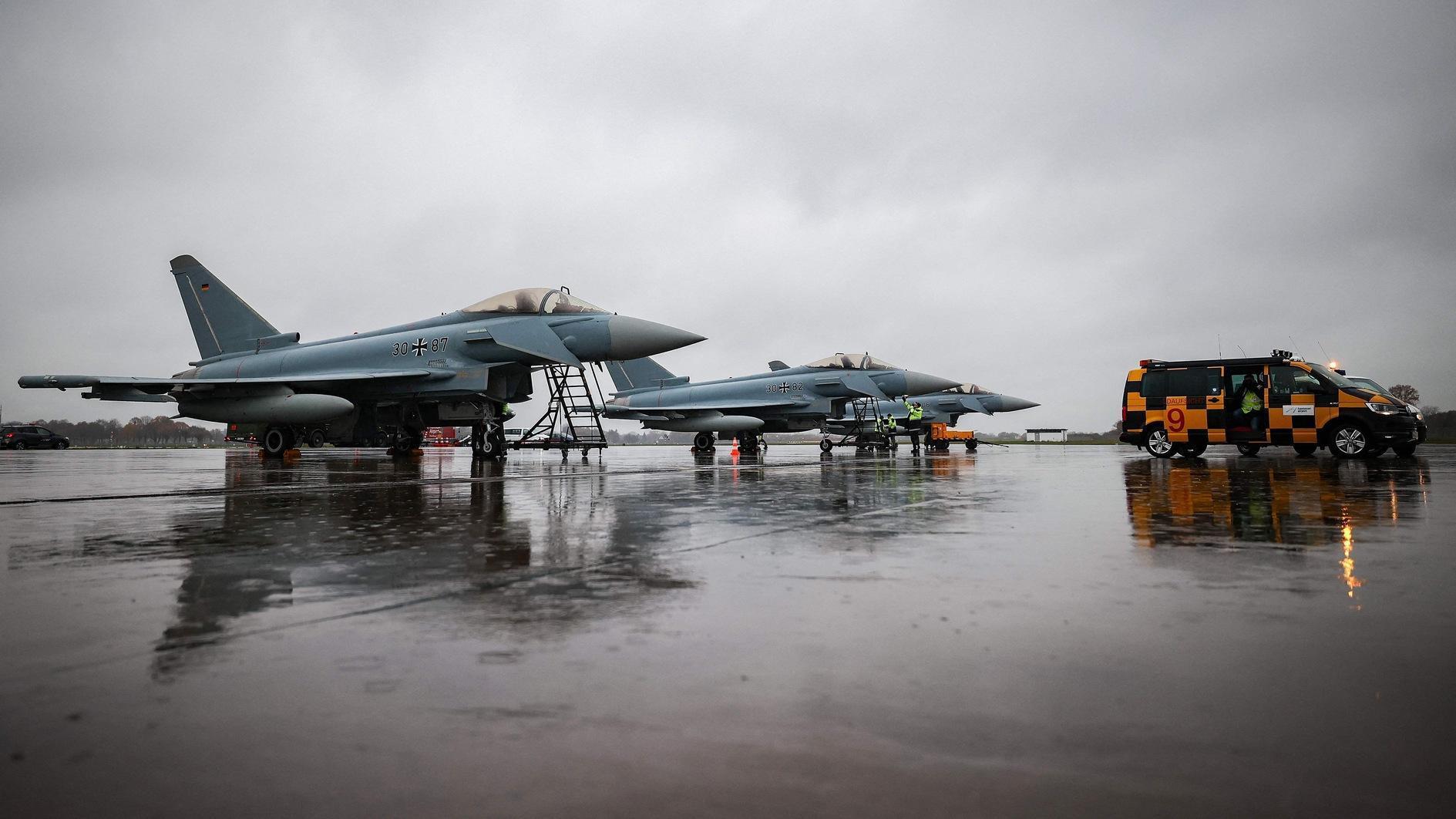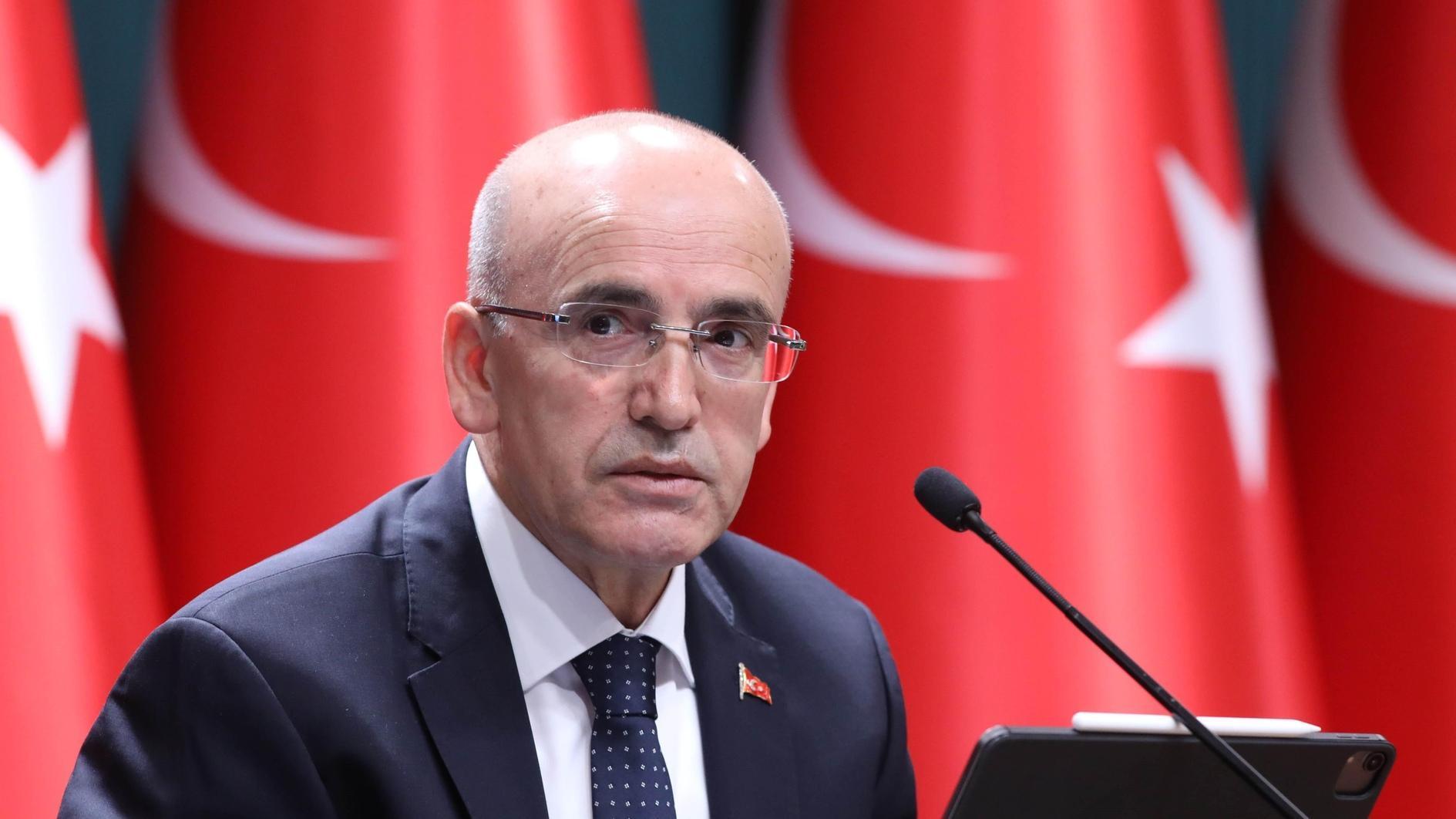Low foreign trade, low growth
MUSTAFA SÖNMEZ - mustafasnmz@hotmail.com
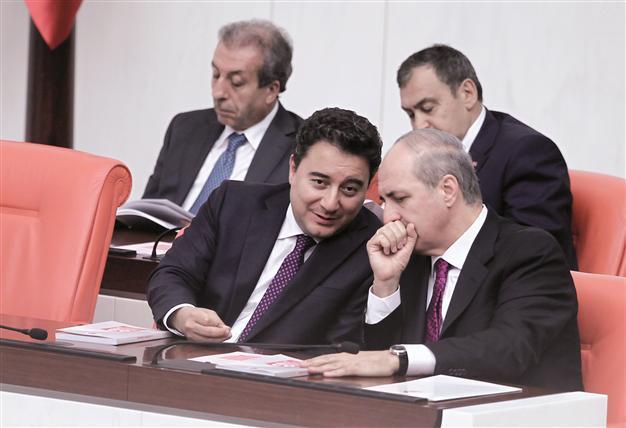
Deputy Prime Minister Ali Babacan (L), who has retained overall responsibility for the economy in the new cabinet, speaks with another Deputy Prime Minister Numan Kurtulmuş at the Parliament. Foreign trade indicators from the first seven months show the 2014 growth target of 4 percent will be difficult to achieve. AA photo
Foreign trade indicators from the first seven months show us that the 2014 growth target of 4 percent will be difficult to achieve.The Turkish economy was integrated rapidly with the world economy after 2000 through both exports and imports (particularly imports). The most sensitive indicator of Turkish economy related to growth is foreign trade, analyses show. When foreign trade speeds up, economic growth also speeds; its slowdown points to a shrinkage in the economy.
Integration increasing
Turkey had a total foreign trade of $83 billion at the beginning of 2000; this commerce constituted 31 percent of the national income. The rapid loss of value of the Turkish Lira (major devaluation) experienced in 2001 worked well for exports. As a result, in the 2001 crisis and following years, foreign trade increased a little and its size reached 37-38 percent of national income.
Integration accelerated in following years. Foreign trade accelerated as well as economic growth in connection with it.
The import leg of foreign trade particularly grew faster than export. The fact that a series of reforms were done after the 2001 crisis built confidence in foreign investors, also the political attraction of the Justice and Development Party’s (AKP) one-party government, sped up the inflow of foreign capital. This, in turn, accelerated imports and, to a certain extent, exports.
When the foreign capital inflow prompting more money to be spent on imports stimulated production focusing on the domestic market, particularly construction, economic growth sped up.
As a result, increased imports and increased exports, even though the latter lagged behind, increased trade with the outer world and its share in national income reached 45 percent in 2008.
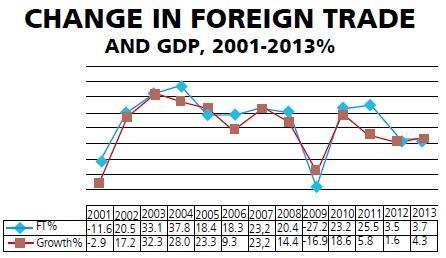 During the crisis
During the crisis For Turkey, 2009 was a year that the global crisis did not knock down but shook and when there were rapid climbs in the outflow of foreign capital and foreign exchange rates, imports decreased to a significant extent. The gaining of value of foreign currency did not help exports either. The drop of demand in world markets did not activate exports. As a result, in 2009, total foreign trade shrank 27 percent compared to 2008. In national income, the drop in dollar basis reached 17 percent.
In the years after the crisis, both foreign trade and, based on that, the growth rate rose. In 2010 and 2011, foreign trade increased around 25 percent accompanied by a growth in national income based on dollars first to 19 percent, then nearing about 6 percent.
However, the increase of imports in 2010 and 2011 beyond that of exports ultimately boosted the foreign trade deficit. This meant the foreign currency deficit rose and the growth in the current account deficit rose to gigantic dimensions. The years 2012 and 2013 have become low-tempo growth years even though the appetite for imports did not really fall.
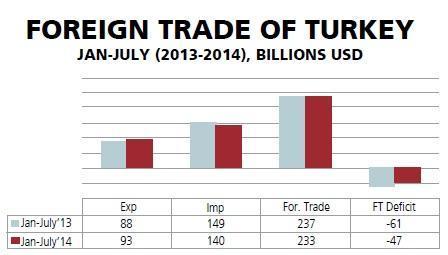 2014 foreign trade in 2014
2014 foreign trade in 2014 Will the growth target for 2014 set at 4 percent be reached? This frequently asked question was answered positively in the first quarter, that is the period between January and March, but the following quarters have not given much hope on the matter because there is both a significant drop in the domestic demand while difficulties are also being experienced in the international situation.
Despite the foreign exchange rate having a course that encourages exports, the increase in exports is not to the extent expected. While the export of the first seven months has reached $93 million, it has shown a mere 6 percent increase compared to the first seven months of last year. In fact, when the foreign exchange rate increased 20 percent in dollars and almost 25 percent in euros, then it was expected than this would become a wind for exports, but it didn’t happen.
The factors behind the fact that the increase in exports was a mere 6 percent in the first seven months of the year were both the absence of appetite in the EU market and the geopolitical risks and wars in the Middle East. Sales to Iraq, the second-largest market for Turkey’s exports, fell back to 2 percent in the first seven months. Despite the loss of appetite in the EU, nearly 44 percent of our exports were done to the EU in the first seven months. It was 41 percent in the first seven months of last year; thus an increase of 3 percent had occurred. On the other hand, a real fall was experienced in the Near and Middle East, the geography of hot war. While the share in exports was 24 percent, it went down to 22 percent, with a loss of 2 points.
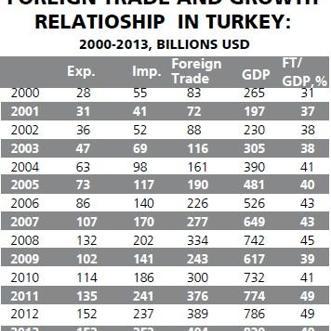 The course of imports
The course of imports The effect of the sharp hike in foreign exchange rate on imports is on the negative direction. The sharpest drop in exports occurred in July and the fall was 13.5 percent compared to July last year.
In the first seven months, imports decreased from $149 billion to almost $140 billion, with a drop of $9 billion. This decline in imports stems mainly from the fall in the import of capital goods, imported vehicles and bar gold.
The foreign trade data of the first seven months carry signs pointing out that the growth target of 2014 set at 4 percent will be difficult to achieve. The fall of the tempo in exports and the low course of imports especially in July point out that growth wheels have slowed down also in the third quarter, following the second quarter.
It can be seen that especially the exports which played a pioneering role in last year’s 4 percent growth will not be quite as successful and that growth rate may decrease even below 3 percent.
The foreign trade data of the first seven months also show that the current account deficit may be around $50 billion. Even at the current state, when an increase in national income that navigates below 4 percent is considered, then a current account deficit/gross domestic product rate of around 6.5 or 7 percent is possible. This is another significant indicator of vulnerability.



